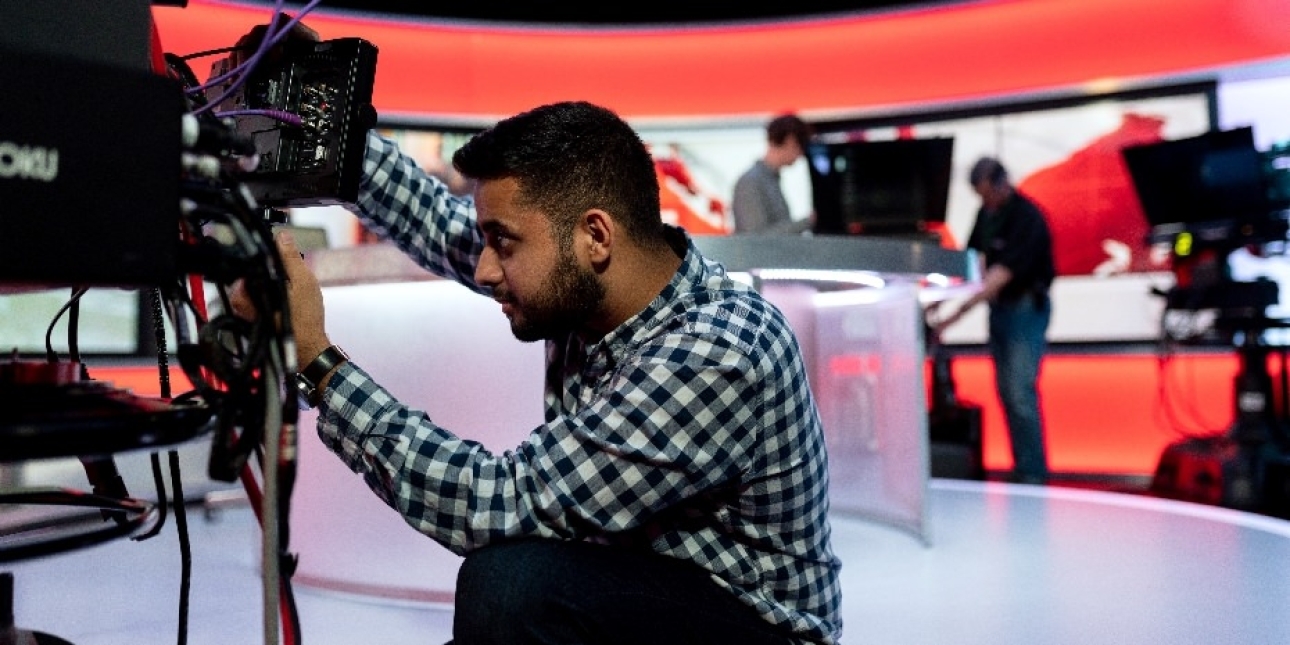PUBLIC RELATIONS
Monday 30th March 2020
Broadcast PR in the New World
Like Brexit and Christmas
Imagine Brexit and Christmas all rolled into a mash-up of a PR story and you have the COVID-19 pandemic. Brexit went on and on…. and on a bit more. At times it seemed like broadcasters would never look at another story again. Christmas, meanwhile, has massive audiences, with millions stuck at home, but PR clients are nearly always reluctant to take advantage of this.
Story Fatigue
Obviously at the moment Coronavirus features heavily in every news bulletin. And it will do for the foreseeable future. However, cracks of light are beginning to show and there already is an appetite for other stories.
Word has come from on high at the BBC that regional broadcasters should start sourcing lighter stories.
Anything with a Coronavirus link will be picked up first, but the scope of topics that includes is still broad. Working at home, physical and mental well-being, a company doing good works (look at the coverage food outlet Leon got this week for their Feed NHS Workers initiative)…. these all fit the bill and are merely examples.
However big and significant a story there does come a point when the broadcasters and their audiences just need a break from it. We need a hint of normal life and to laugh at something frivolous, that reminds us there is joy as well as fear in the world.
What’s currently working
National radio and television are still hard nuts to crack in the current environment. But this is beginning to change. Personal finance stories, tied in to Coronavirus, are proving popular. The day after Boris Johnson’s television announcement that the UK was going to be locked down we secured two mentions on Radio 4’s Today programme, on behalf of James Reed PR and their client the Asphalt Industry Alliance, with a story about pot holes.
Regional broadcasting is much more receptive and we are continuing to meet and even exceed our minimum targets of 10-12 opportunities with our radio days. The stations sometimes have a smaller reach than more typical schedules but the coverage is really not bad given the circumstances.
Broadcasting from home
The instruction to work from home when you can has been embraced by broadcasters. Tune into breakfast television on the BBC or ITV to see what appears at first glance an appallingly framed camera shot, featuring a couple of presenters sitting two meters apart on a sofa with a wide gap of studio background in the middle.
Newsrooms play host to only skeleton staff, their other colleagues beavering away from the comfort of their kitchen tables, including intriguingly, some national TV news presenters.
Thank goodness for technology
Guests are no longer invited into broadcast studios for interviews. Instead phone and Skype conversations from home have become the new broadcast norm. From a PR perspective the lockdown brings its challenges, not least that spokespeople are being left unchecked as they speak to broadcasters this way and in isolation.
A good briefing before any radio or television interview should help and might include the following tips:
- If you’re doing an interview by phone for radio try and use a landline rather than a mobile line, as it’s better quality sound.
- For Skype make sure the camera is level with your eyes. You don’t want to be looking down at the camera, it’s very unflattering.
- Think hard about the background for your interview. Whilst in this world working from home is the norm make sure anything in shot is appropriate to the brand.
Of course, broadcasters prefer quality sound/HD vision but, more importantly, they need a wide variety of contributors and this is the compromise.
Make the most of the audience figures
If there’s a silver lining to be found in all this dreadfulness it’s the huge audience figures, the result of so many people tuning in at home to find out the latest Coronavirus news. The audience figures for broadcast are shooting through the roof.
It IS a bit like Christmas in that you have an unusually high number of people at home, switching on the radio or television at times they wouldn’t normally do.
This peaked with the Prime Minister’s pre-recorded message on Monday 23rd March, telling people to stay at home during the Coronavirus pandemic.
One the most watched TV broadcasts in television history, 27 million people tuned in to hear Boris Johnson announce the lockdown of the UK. This exceeds the 24 million who watched the opening of the 2012 Olympics, but less than the 32.1 million who switched on for the funeral of Princess Diana.
Wait until the crisis is over and you won’t be competing for coverage with Coronavirus stories, but you will be going head to head with all the brands who have put their PR campaigns on hold.
We’ve already seen the appetite for other stories at a regional level, and we predict once we’re into April national broadcasters will begin to follow suit. So, if you’ve put a story on hold, fearing you won’t get on-air coverage, think again.
It’s not easy right now, but it is possible.
Photo by ThisisEngineering RAEng on Unsplash
